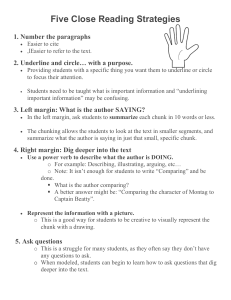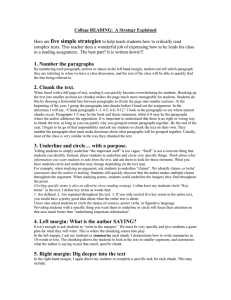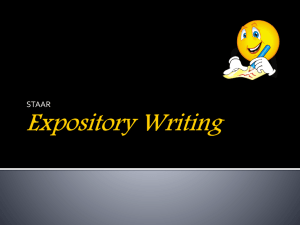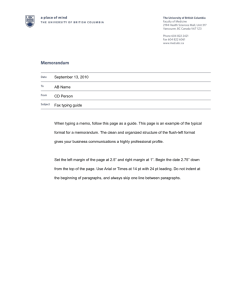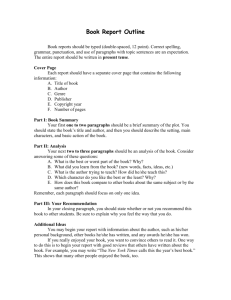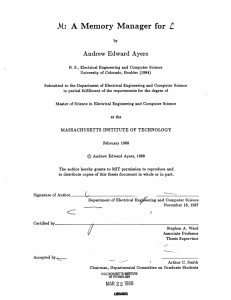close reading handout
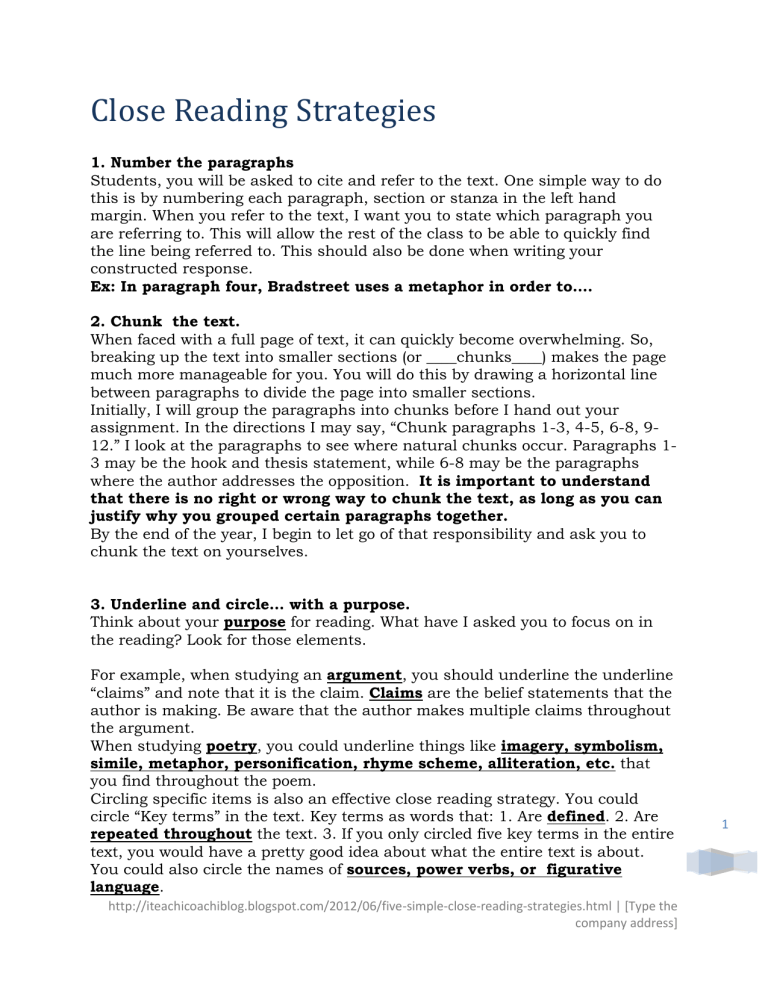
Close Reading Strategies
1. Number the paragraphs
Students, you will be asked to cite and refer to the text. One simple way to do this is by numbering each paragraph, section or stanza in the left hand margin. When you refer to the text, I want you to state which paragraph you are referring to. This will allow the rest of the class to be able to quickly find the line being referred to. This should also be done when writing your constructed response.
Ex: In paragraph four, Bradstreet uses a metaphor in order to….
2. Chunk the text.
When faced with a full page of text, it can quickly become overwhelming. So, breaking up the text into smaller sections (or ____chunks____) makes the page much more manageable for you. You will do this by drawing a horizontal line between paragraphs to divide the page into smaller sections.
Initially, I will group the paragraphs into chunks before I hand out your assignment. In the directions I may say, “Chunk paragraphs 1-3, 4-5, 6-8, 9-
12.” I look at the paragraphs to see where natural chunks occur. Paragraphs 1-
3 may be the hook and thesis statement, while 6-8 may be the paragraphs where the author addresses the opposition. It is important to understand that there is no right or wrong way to chunk the text, as long as you can justify why you grouped certain paragraphs together.
By the end of the year, I begin to let go of that responsibility and ask you to chunk the text on yourselves.
3. Underline and circle… with a purpose.
Think about your purpose for reading. What have I asked you to focus on in the reading? Look for those elements.
For example, when studying an argument, you should underline the underline
“claims” and note that it is the claim. Claims are the belief statements that the author is making. Be aware that the author makes multiple claims throughout the argument.
When studying poetry, you could underline things like imagery, symbolism,
simile, metaphor, personification, rhyme scheme, alliteration, etc. that you find throughout the poem.
Circling specific items is also an effective close reading strategy. You could circle “Key terms” in the text. Key terms as words that: 1. Are defined. 2. Are
repeated throughout the text. 3. If you only circled five key terms in the entire text, you would have a pretty good idea about what the entire text is about.
You could also circle the names of sources, power verbs, or figurative
language. http://iteachicoachiblog.blogspot.com/2012/06/five-simple-close-reading-strategies.html | [Type the company address]
1
4. Left margin: What is the author SAYING?
In the left margin, summarize each chunk. Try to summarize in 10-words or less. The chunking allows the students to look at the text in smaller segments, and summarize what the author is saying in just that small, specific chunk.
5. Right margin: Dig deeper into the text
In the right-hand margin, you are to complete a specific task for each chunk.
This may include:
· Use a power verb to describe what the author is DOING. (For example:
Describing, illustrating, arguing, etc..) Note: It isn’t enough for you to write
“Comparing” and be done. What is the author comparing? A better answer might be: “Comparing the character of Montag to Captain Beatty”.
· Represent the information with a simple picture.
· Ask questions.
Here is what an annotated article might look like after you have performed a close read of it: http://iteachicoachiblog.blogspot.com/2012/06/five-simple-close-reading-strategies.html | [Type the company address]
2
